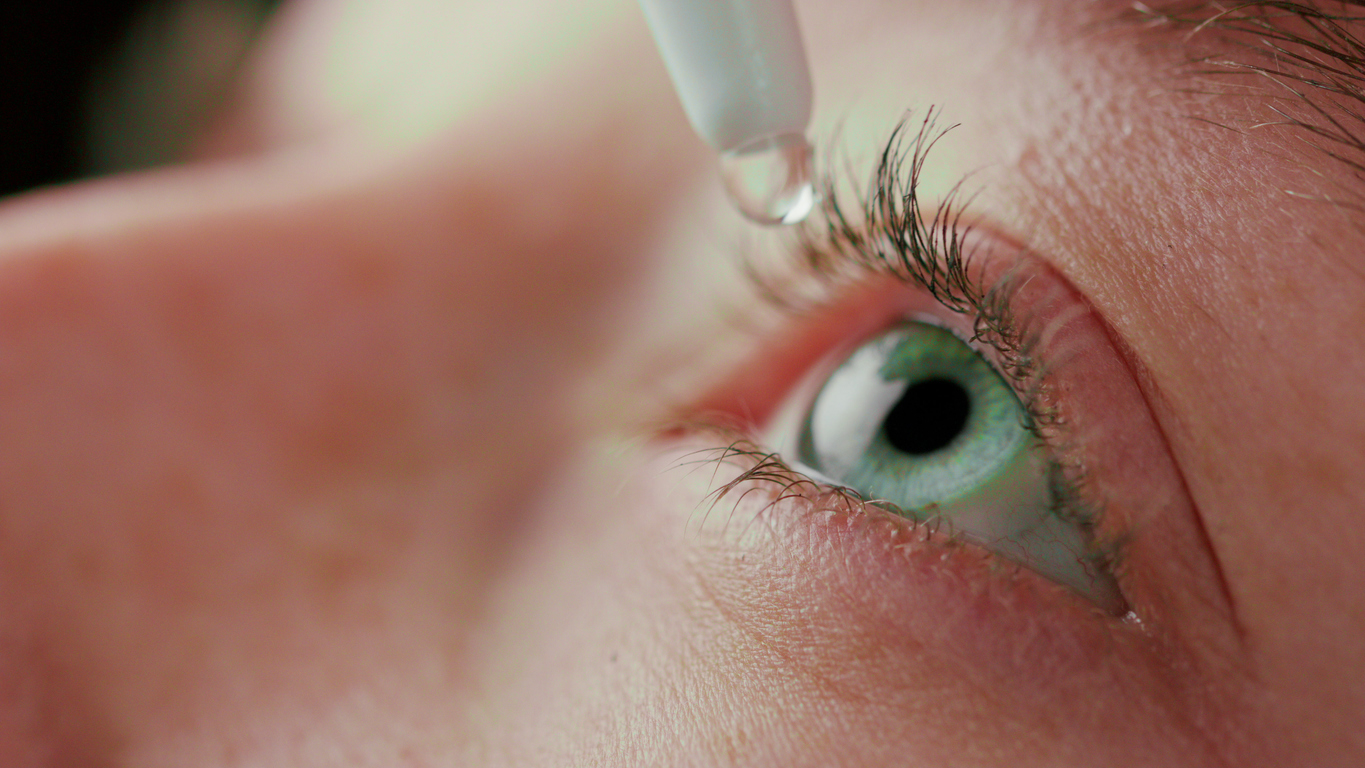In India, regulators emphasise that such drops should be prescribed and monitored by medical professionals, rather than marketed as a mass-market solution.
Published Oct 06, 2025 | 7:00 AM ⚊ Updated Oct 06, 2025 | 7:00 AM

Eye Drops. (iStock)
Synopsis: Early research suggests an eye drops can improve near vision quickly and without surgery. Pilocarpine, a century-old drug repurposed for presbyopia, can cause side effects such as headaches, eye redness, and vision changes, and its prolonged use has not been extensively studied.
A new class of eye drops is emerging as a potential alternative to reading glasses for presbyopia, the age-related difficulty in near vision that affects nearly two billion people worldwide.
Early research suggests these eye drops can improve near vision quickly and without surgery, generating significant interest among patients and ophthalmologists alike.
Despite the promise, experts caution that long-term safety and effectiveness remain uncertain. Pilocarpine, a century-old drug repurposed for presbyopia, can cause side effects such as headaches, eye redness, and changes in vision, and its prolonged use has not been extensively studied.
In India, regulators emphasise that such drops should be prescribed and monitored by medical professionals, rather than marketed as a mass-market solution. If validated in larger populations, however, these eye drops could offer a non-invasive, convenient, and accessible alternative to reading glasses, potentially transforming the management of presbyopia.
Near vision difficulty, medically known as presbyopia, is a virtually universal condition affecting people after the age of 40. It impacts daily life in varying degrees, particularly for those who have never worn glasses before, making tasks such as reading a mobile phone or a menu unexpectedly frustrating.
Speaking to South First, renowned ophthalmologist Dr Ravindra Mohan explained, “Any solution to this problem would straight away win the Nobel Prize,” highlighting how significant a breakthrough would be in addressing this widespread problem.
For those who have previously worn glasses, switching to reading or progressive lenses is relatively straightforward. However, for first-time users, the adjustment is often distressing, creating a clear demand for alternatives. In this context, the idea of a “magical eyedrop” emerged.
The drug in focus is pilocarpine, a compound known for over a century and originally used to treat glaucoma, particularly angle-closure or narrow-angle types.
Over time, its use in glaucoma declined because newer medications with fewer side effects became available. As Dr Mohan noted, “This drop slowly fell into disfavour.” Yet, pilocarpine has long been known to constrict the pupils, an effect that could potentially improve near vision and reduce the need for reading glasses.
While pilocarpine offers potential benefits for near vision, Dr Mohan emphasised that it carries significant side effects.
For glaucoma patients, the drug is typically used in concentrations of two percent or four percent, and many experience redness of the eye, pain around the eye, headaches, or brow ache, sometimes severe enough that the medication must be discontinued.
Moreover, pilocarpine can predispose users to serious complications such as retinal detachment, macular edema (swelling at the back of the eye), and hastened formation of lens opacities, potentially leading to cataracts.
Despite these risks, the pupil-constricting effect of pilocarpine has long been recognised as beneficial for improving near vision. Building on this understanding, pharmaceutical companies explored its use specifically for presbyopia.
In the United States, a small study involving 354 patients over 30 days led to FDA approval of 1.25 percent pilocarpine, marketed as Vuity by Allergan, part of the AbbVie group, Dr Mohan said.
“Amazingly, for a short duration of 30 days, a small group of 354 people… the Food and Drug Administration, FDA of the USA, gave the permission for use of pilocarpine 1.25 percent for the treatment of presbyopia,” he added.
Following this approval, numerous brands and formulations emerged, including a diluted 0.4 percent solution, and some are still in clinical trials. Yet, adoption has not been as widespread as anticipated, with ophthalmologists noting that despite availability, patients and practitioners remain cautious due to the potential side effects and lack of long-term data.
In India, the pilocarpine-based eye drop for presbyopia, Pres-V-U (1.25%) by Entor Pharmaceuticals, was initially launched with a strong mass-media focus rather than targeting medical professionals.
Dr Mohan explained that this approach “did not go well with the medical professionals,” as ophthalmologists emphasised that such medication should never be over-the-counter due to potential serious effects on vision and eye health.
Following media attention and safety concerns, the Drug Controller General of India (DGCI) initially suspended the launch in September 2024. The suspension was later revoked in April 2025, with the Central Drug Standard Control Organisation (CDSCO) allowing the drug under strict conditions, including prohibiting direct mass-media promotion.
Yet, according to Dr Mohan, “To the best of my knowledge, despite the ban having been revoked in April of 2025, the drug has still not been launched.”
Dr Mohan highlighted that while pilocarpine may be useful for certain patients who prefer to avoid reading glasses, there are important long-term considerations. Using the drops once or twice daily over 15–20 years, from age 40 to 60, remains largely unstudied.
The pupil-constricting effect, which is central to near vision improvement, may also reduce distance vision and increase risks during low-light activities like night driving. Additionally, as the eye ages and early lens changes or cataracts develop, smaller pupils can limit light entry, compounding vision challenges.
“Ultimately,” Dr Mohan emphasised, “A drug that may be useful for a limited group of patients wishing to avoid reading glasses should, if used at all, be administered strictly under medical supervision, without the hype of its initial launch, and with clear explanations regarding its benefits and potential risks.”
He added, “Even in the West, where it has been available, I do not think that it has been the rage that people thought about it,” underscoring that long-term use for avoiding reading glasses is not yet a widely adopted solution.
(Edited by Muhammed Fazil.)
